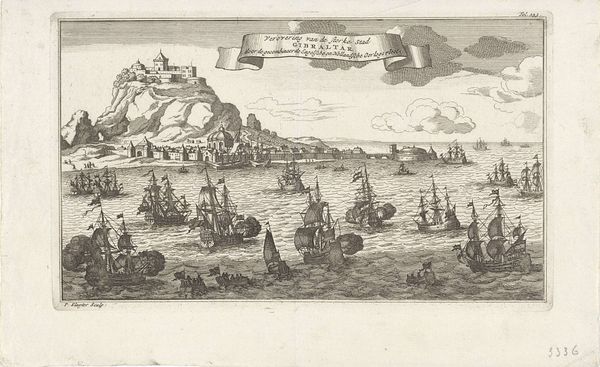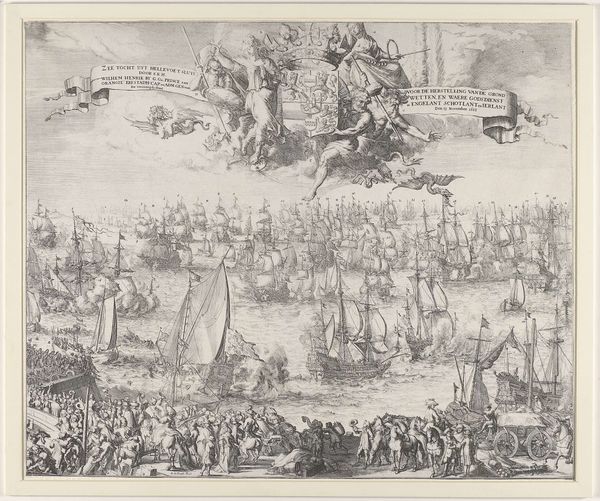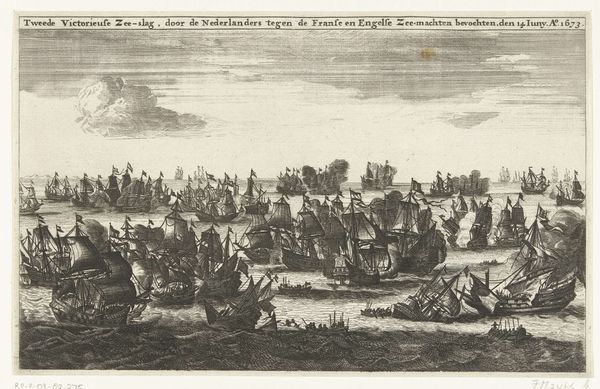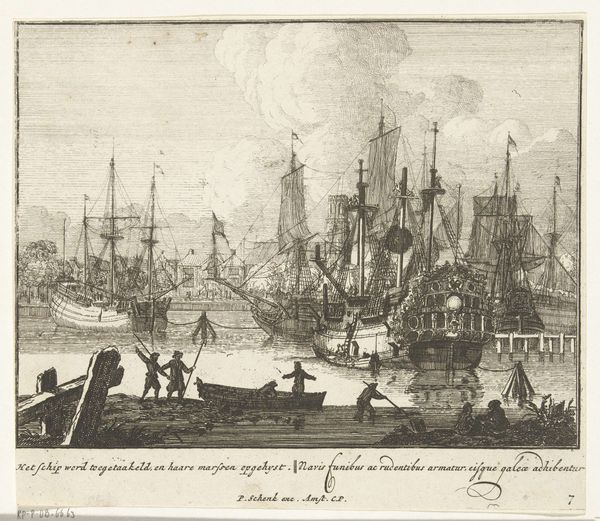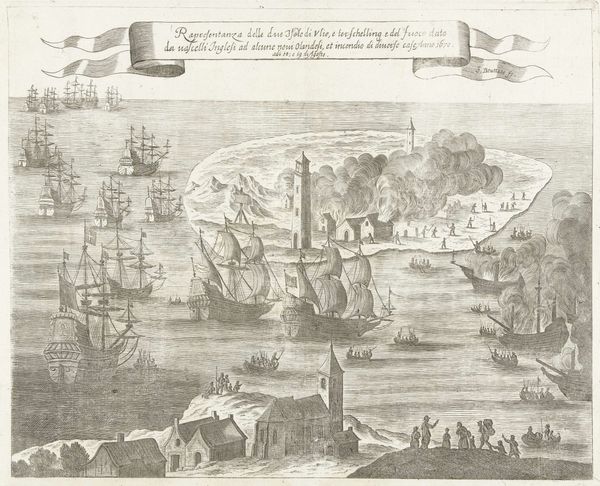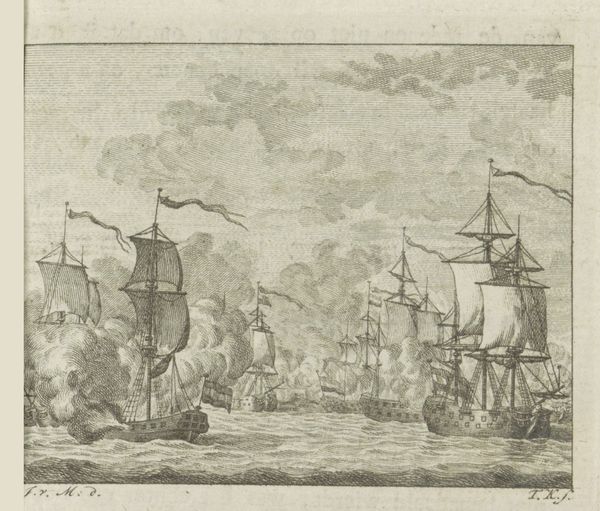
#
quirky sketch
#
old engraving style
#
sketch book
#
personal sketchbook
#
sketchwork
#
pen-ink sketch
#
pen work
#
sketchbook drawing
#
storyboard and sketchbook work
#
sketchbook art
Dimensions: height 285 mm, width 363 mm
Copyright: Rijks Museum: Open Domain
Editor: Here we have Coenraet Decker's "Inname van Cochin door Nederlandse V.O.C. schepen," from 1682. It depicts a naval battle, rendered with very precise lines. The sheer number of ships is impressive. How do you interpret this work? Curator: It's more than just a depiction of a naval battle. Think about what the V.O.C. represents: Dutch colonialism. The "taking" or "capture" implied by "Inname" signals the violent imposition of power. Can we view this seemingly innocuous illustration of boats without accounting for that imbalance of power? Editor: So you're saying it's important to consider the social context of the Dutch East India Company's actions. I hadn't thought of that. The angel at the top almost made it feel like a celebration. Curator: Exactly! The visual rhetoric here seeks to normalize, even celebrate, colonial violence. Look closely. Notice how much detail is lavished on the Dutch ships, versus the minimal rendering of the Cochin landscape? Whose perspective is being prioritized here, and why? And what does it mean to find this image today in the Rijksmuseum? Editor: It's forcing me to reconsider my initial reading of the piece as a purely historical document, divorced from ethical implications. What I perceived as neutral illustration, can be seen as reinforcing a specific viewpoint and justifying colonial actions. Curator: Precisely. Engaging with art from this perspective opens a dialogue on power dynamics and their lasting legacies, urging us to be critically aware of the narratives we consume. Editor: That’s really changed how I see it. I'll definitely remember to think about the underlying power dynamics in historical depictions from now on.
Comments
No comments
Be the first to comment and join the conversation on the ultimate creative platform.


